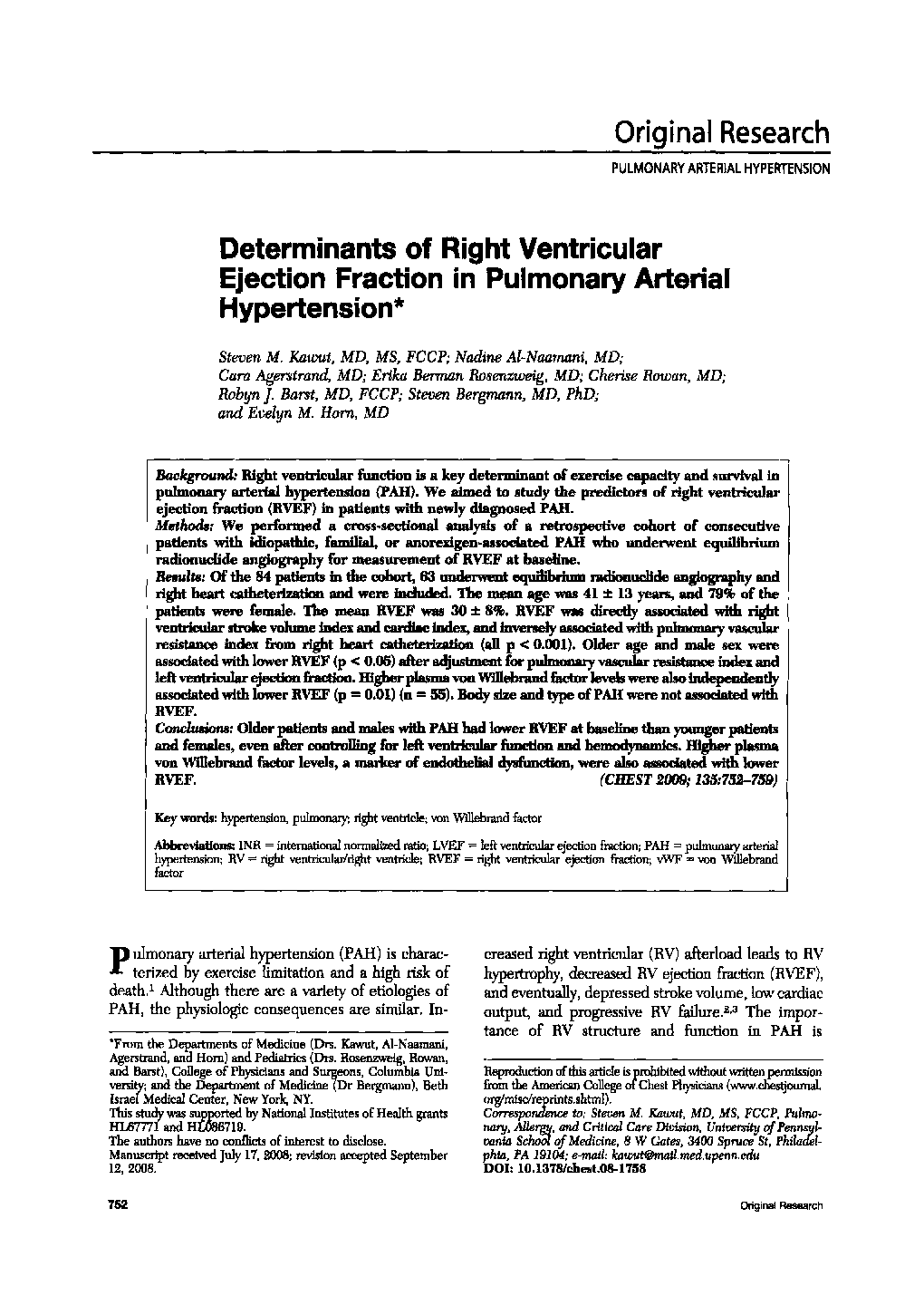| Article ID | Journal | Published Year | Pages | File Type |
|---|---|---|---|---|
| 2903744 | Chest | 2009 | 8 Pages |
BackgroundRight ventricular function is a key determinant of exercise capacity and survival in pulmonary arterial hypertension (PAH). We aimed to study the predictors of right ventricular ejection fraction (RVEF) in patients with newly diagnosed PAH.MethodsWe performed a cross-sectional analysis of a retrospective cohort of consecutive patients with idiopathic, familial, or anorexigen-associated PAH who underwent equilibrium radionuclide angiography for measurement of RVEF at baseline.ResultsOf the 84 patients in the cohort, 63 underwent equilibrium radionuclide angiography and right heart catheterization and were included. The mean age was 41 ± 13 years, and 79% of the patients were female. The mean RVEF was 30 ± 8%. RVEF was directly associated with right ventricular stroke volume index and cardiac index, and inversely associated with pulmonary vascular resistance index from right heart catheterization (all p < 0.001). Older age and male sex were associated with lower RVEF (p < 0.05) after adjustment for pulmonary vascular resistance index and left ventricular ejection fraction. Higher plasma von Willebrand factor levels were also independently associated with lower RVEF (p = 0.01) (n = 55). Body size and type of PAH were not associated with RVEF.ConclusionsOlder patients and males with PAH had lower RVEF at baseline than younger patients and females, even after controlling for left ventricular function and hemodynamics. Higher plasma von Willebrand factor levels, a marker of endothelial dysfunction, were also associated with lower RVEF.
